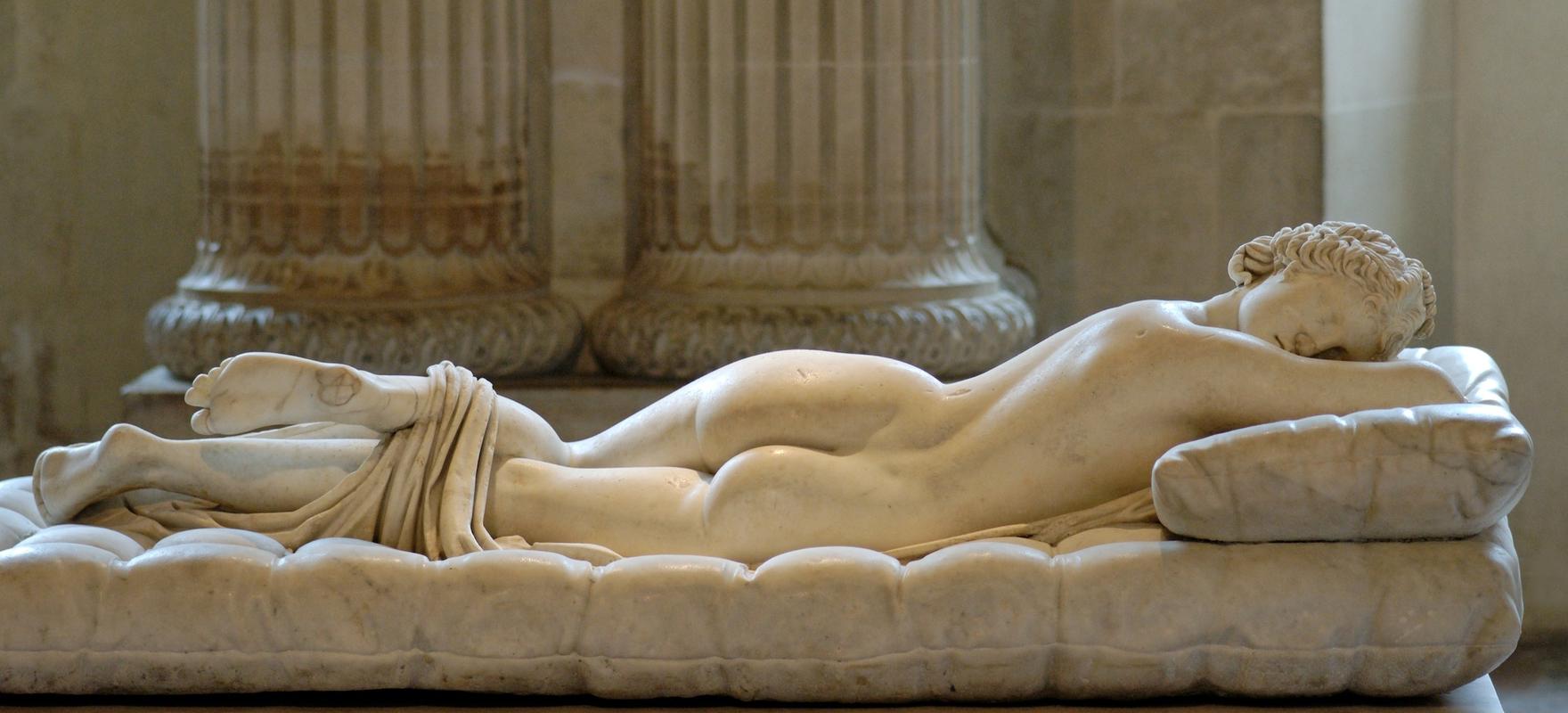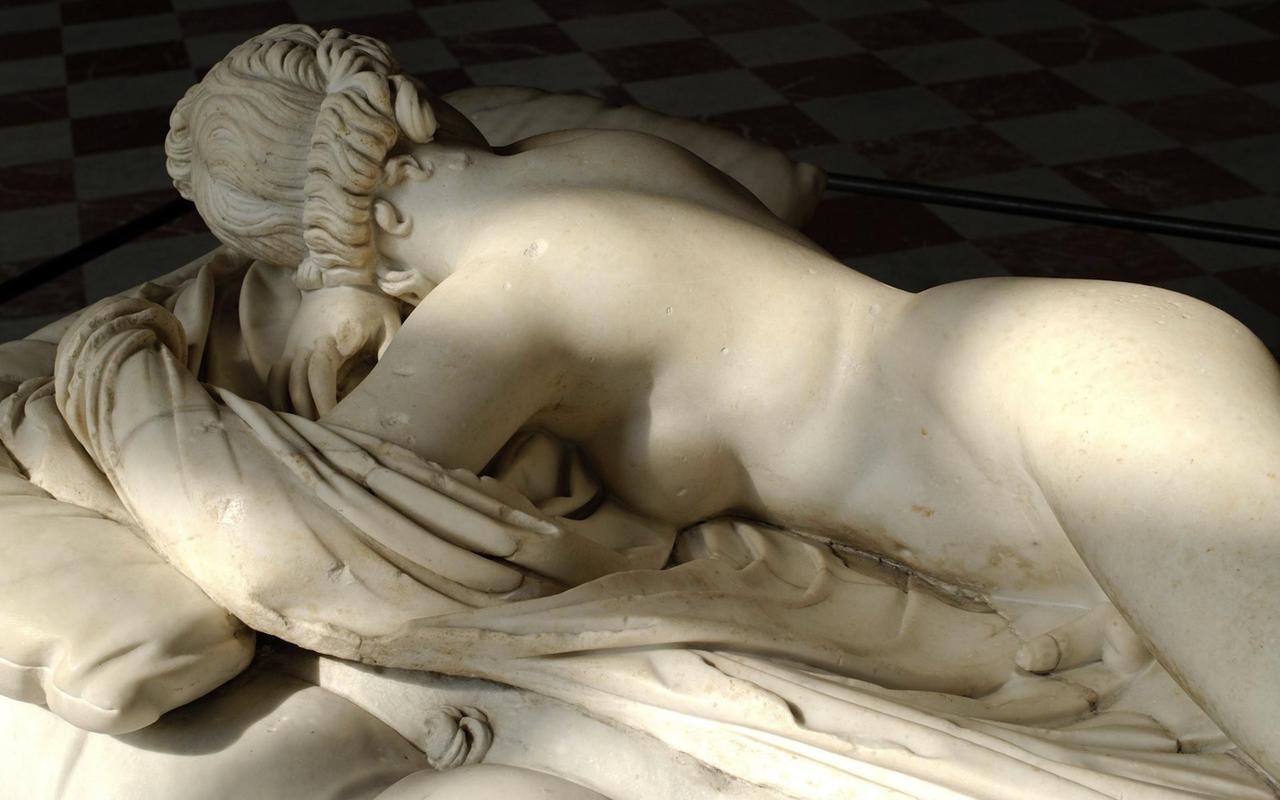More about Sleeping Hermaphrodite

Sr. Contributor
The alternate title to Sleeping Hermaphroditos should be Say Hello to my Little Friend! instead of Sleeping Borghese.
As is common in history, the alternate title references not the person who created or found the sculpture, but the man who threw money at its preservation. The rich always get the glory.
The most famous part of this sculpture is actually created by a mystery artist.
Scipione Borghese was a gay Italian cardinal who made himself and his uncle/Pope Paul V rich in the seventeenth century through taxes and fees. When this piece was dug up during the building of the Roman church Santa Maria della Vittoria, Borghese had to have it and later commissioned Gian Lorenzo Bernini to create the mattress on which our Hermaphroditos sleeps. Maybe overtaxing is less offensive if you use your money for things like restoring churches and collecting art with homoerotic undertones? If you feel like there is a contradiction here you aren’t alone. Uncle Pope wasn’t too happy about his nephew’s behavior or sexuality and supposedly kept those in-the-know quiet by giving them promotions.
Though the mattress looks comfy, if you are tired during your long tour of the Louvre I’d suggest cuddling up somewhere else. Our serene sleeping friend is actually at least part vengeful rapist (and no, it’s not that part). The shorter versions of the Hermaphroditos myth simply state that he was the son of Hermes and Aphrodite, with his name and body reflecting both parents. In Ovid’s version (the best version) Hermaphroditos is young, superhot and full of wanderlust. During his journey he comes across the lake of self-obsessed water nymph, Salmacis. Unlike her sister-nymphs, Salmacis refuses to go hunting to honor Diana; she’d rather hang out by the water pampering herself and taking ancient selfies (reflective water= original Snapchat). Apparently no amount of pampering can win over the virginal Hermaphroditos who refuses Salmacis causing her to hide in the bushes like a common satyr.
Thinking the coast is clear, Hermaphroditos disrobes and jumps in followed by Salmacis. She proceeds to force herself upon him until they are just a mass of writhing flesh. As he continues to fight, the literal nympho calls on the Gods to let them never be apart. Since she was such a good Diana devotee and raping the son of two Gods is no biggie they decide she totally deserves to get her way and thus merges their bodies into one forever. To get revenge on the innocent people that had nothing to do with his rape Hermaphroditos then asks his parents to curse the water so anyone who bathes there will befall a similar physical fate. To this day people believe that the waters in the Salmacis Fountain will make those who drink from them more effeminate.
But, in the end, does it really matter who made such an awesome sculpture when you've got a perfectly round thing in your face? It might get a little sexually confusing for you as you walk around the piece; does that perfect butt belong to the penis half or the boobies half?
Featured Content
Here is what Wikipedia says about Sleeping Hermaphroditus
The Sleeping Hermaphrodite is an ancient marble sculpture depicting Hermaphroditus life size. In 1620, Italian artist Gian Lorenzo Bernini sculpted the mattress upon which the statue now lies. The form is partly derived from ancient portrayals of Venus and other female nudes, and partly from contemporaneous feminised Hellenistic portrayals of Dionysus/Bacchus. It represents a subject that was much repeated in Hellenistic times and in ancient Rome, to judge from the number of versions that have survived. Discovered at Santa Maria della Vittoria, Rome, the Sleeping Hermaphrodite was immediately claimed by Cardinal Scipione Borghese and became part of the Borghese Collection. The "Borghese Hermaphrodite" was later sold to the occupying French and was moved to The Louvre, where it is on display.
The Sleeping Hermaphrodite has been described as a good early Imperial Roman copy of a bronze original by the later of the two Hellenistic sculptors named Polycles (working c. 155 BC); the original bronze was mentioned in Pliny's Natural History.
Check out the full Wikipedia article about Sleeping Hermaphroditus

















